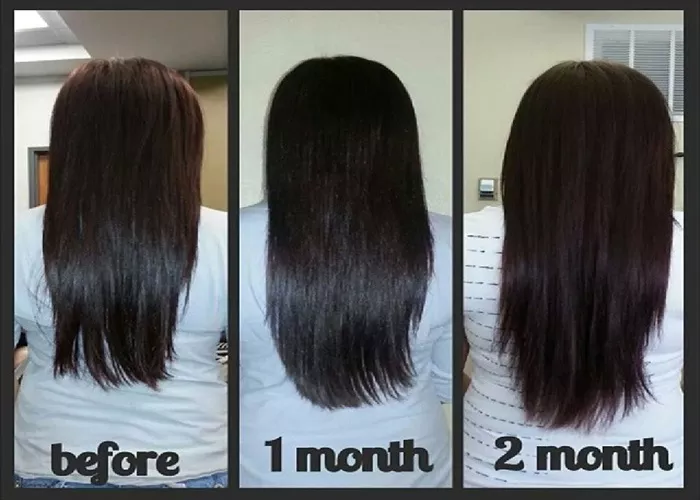As a hair restoration specialist, one of the most frequent questions I encounter is: “Where does the transplanted hair come from?” Understanding the source of donor hair is critical for patients considering follicular unit extraction (FUE) or other transplantation techniques. This article explores the origins of transplanted hair, focusing on scientific principles, clinical practices, and emerging trends in 2025.
Autologous Hair: The Gold Standard
The vast majority of hair transplants rely on autologous hair—hair follicles harvested from the patient’s own body. This approach minimizes rejection risks and ensures natural aesthetic outcomes.
Primary Donor Sites
Occipital Scalp (Back of the Head):
The “safe zone” for hair transplantation, as these follicles are genetically resistant to dihydrotestosterone (DHT), the hormone responsible for androgenetic alopecia.
High follicular density (60-80 units/cm²) ensures sufficient grafts for most cases.
Techniques like FUE and FUT (Follicular Unit Transplantation) are commonly used here. FUE leaves minimal dot-like scars, while FUT may leave a linear scar.
Temporal and Parietal Regions:
Secondary donor areas if the occipital zone is insufficient. These regions also contain DHT-resistant follicles but with slightly lower density.
Body Hair Transplant (BHT):
For patients with limited scalp donor hair, body hair from the chest, beard, legs, or arms can be used. However:
Challenges: Body hair differs in texture, growth cycle, and angle, requiring meticulous surgical planning to match scalp hair aesthetics.
Applications: Ideal for secondary procedures or camouflage in advanced baldness (Norwood VI/VII).
Allografts and Experimental Sources
While autologous hair dominates clinical practice, research into alternative sources continues:
Allogeneic Transplants (Donor Hair from Others):
Rarely performed due to immune rejection risks and ethical concerns. Requires immunosuppressive therapy, making it impractical for cosmetic purposes.
Limited to experimental settings in countries like Germany and Japan.
Artificial/Synthetic Hair:
Synthetic fibers or bioengineered hair-like structures are under development but lack long-term viability and natural appearance.
Xenotransplants (Animal Hair):
Early-stage research explores using animal follicles (e.g., pigs), but immune compatibility and ethical issues remain unresolved.
Harvesting Techniques and Their Impact
The method of extraction directly affects donor hair viability and patient outcomes:
FUE (Follicular Unit Extraction):
Uses a 0.6–0.8mm punch tool to extract individual follicles, preserving donor site aesthetics.
Preferred for patients seeking short haircuts, as it avoids linear scars.
FUT (Strip Harvesting):
Removes a strip of scalp from the occipital region, yielding higher graft numbers in a single session.
May leave a linear scar, but advancements in trichophytic closure have improved scar concealment.
Robotic FUE Systems (e.g., ARTAS®):
Enhances precision, reducing transection rates to <5% and optimizing graft survival.
Critical Considerations for Donor Hair
Donor Depletion Risk: Overharvesting can cause visible thinning in the donor area. Surgeons typically limit extraction to 20–30% of the donor zone’s density.
Follicular Quality: Healthy, anagen-phase follicles are prioritized for transplantation. Damaged or miniaturized follicles are discarded.
Patient-Specific Factors:
Scalp laxity, hair caliber, and curl pattern influence graft selection and surgical planning.
Future Directions
Stem Cell-Based Regeneration: Research into culturing hair follicles *in vitro* could revolutionize donor supply limitations.
3D-Printed Follicles: Experimental technologies aim to bioengineer follicles using patient-derived cells.
Conclusion
In 2025, autologous hair from the occipital scalp remains the cornerstone of hair transplantation, offering predictable, natural results. While body hair and experimental sources provide alternatives for complex cases, their use requires careful evaluation. As technology advances, the field moves toward minimizing donor site impact and maximizing graft survival, ensuring patients achieve both aesthetic and psychological restoration.
For practitioners, prioritizing patient education on donor hair limitations and managing expectations is key to successful outcomes. Always emphasize the importance of choosing experienced surgeons and evidence-based techniques.
Related topics:
Does the Donor Area Grow Back After FUE?


